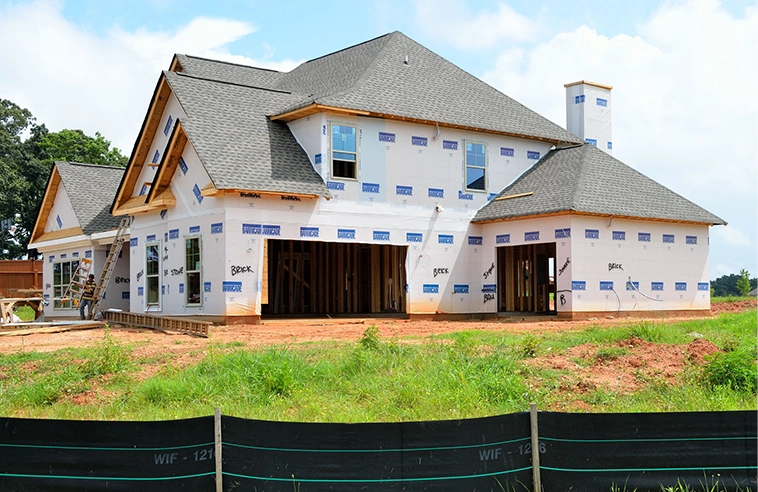What will your builder’s warranty cover if you partner with ProHome?
At the moment, if you’re managing your own builder’s warranty, you may well simply ‘fix’ everything that your homeowners request — even if it’s not something that needs ‘fixing’. You want to keep your customers happy, right?
But that generosity has a cost — both financial and in terms of time. You need to take the time to go out and look at homeowners’ issues, or else you need to pay your construction manager to do so. You have to take the time to schedule repair visits or pay your office manager to do so. And if the fix isn’t covered by the original installation, you might have to pay subcontractors or your own staff to make those repairs, and so on. All the time and money spent on previous builds is reducing your profit on that build, and preventing you making faster progress on new builds.
What if there was an easier way? A way to say ‘no’ to fixing perfectly normal drywall cracks, while also keeping your customers happy?
The way to do it is with an explicit written warranty document — which homeowners sign — that meets the required standards in your state, and which also explicitly states the kinds of things that are not covered.
When your customers can see in black and white, on a document they signed, that a visible seam in carpeting is not a defect, they have objective proof that it’s not something that should be ‘fixed’ under the warranty. They can see they’re not subject to your whim, and you’re not trying to cheat them by not having made carpet seams invisible.
At ProHome, our standard builder warranty management program is based on NAHB and RCPG standards but it’s customizable to meet your needs. We also provide troubleshooting tips on our website that can alleviate homeowners’ worries and reduce the number of warranty calls. For example, if their heating isn’t working, before calling they should run through the troubleshooting list and see if any breakers have tripped, ensure the thermostat is set to ‘heat’, make sure the furnace pilot light is on, check the bottom cover panel on the furnace is properly closed, and so on.
What does the standard builder’s warranty cover and not cover ?
Sometimes, homeowners simply don’t know what’s normal — especially if this is the first time they’ve owned a new home. Explicitly stating in the warranty document what’s normal can put your customers’ minds at ease, and reduce the number of warranty calls. A second cause of unnecessary warranty calls and repairs is that homeowners aren’t given clarity on what’s a home maintenance issue that they should take care of themselves. Thirdly, homeowners may have no idea of the defect tolerance for various issues, such as cracks in concrete. Here, we’ll look at a few examples in each of these three categories.
Homeowners’ ignorance of what’s normal
At ProHome, we pride ourselves on our homeowner education, which starts at the New Home Orientation walkthrough. We also provide some essential education in the warranty document itself. Here are some examples of the kind of educational material included in the warranty document that you’ll give your new homeowners.
We explain to homeowners about efflorescence, the perfectly normal phenomenon of a layer of salt forming on the surface of bricks. As you know — but your homeowners may not — there’s nothing wrong when this happens, and this phenomenon is not covered by the warranty. If they find the efflorescence aesthetically bothersome, homeowners can simply remove it, as part of their home maintenance.
Similarly, homeowners may not know that it’s normal — and not at all problematic — for hairline cracks to develop in concrete. Our warranty document reassures them that the structural integrity of the home is not affected, and such cracks are not covered by the warranty. Of course, large cracks are covered. For example, it’s explicitly stated that cracks greater than ¼” in concrete footings are considered excessive and are covered by the warranty.
The warranty document also explains that it’s normal for ductwork to make noises due to the movement of the metal. Ticking or crackling sounds are common, and not deficiencies. In contrast, excessively loud slamming or banging noises — often called ‘oil canning’ — is a deficiency that the builder is obligated to remedy during the term of the warranty.
Home maintenance
Sometimes, homeowners are simply not aware of their home maintenance responsibilities. As well as providing home maintenance tips on our website, the contractor warranty document also makes explicit some key home maintenance responsibilities.
For example, the builder is responsible to address only cracks and gaps in interior caulking that are identified on the punch list during the pre-closing walkthrough. The warranty document explicitly states that after the punch list caulking issues are addressed, maintaining the caulking is the homeowner’s responsibility.
The warranty document explicitly states that light bulbs are not covered under the warranty. If an electrician is called out and the problem is a burned out light bulb, the warranty document explicitly states that the owner will be charged for the cost of the service call.
Lastly, homeowners are responsible for maintaining proper humidity levels in their home. If they don’t, gaps between hardwood floor boards may appear after installation. The builder is responsible for gaps greater than 1/8” only if they were noted on the pre-closing punch list.
The difference between acceptable and unacceptable ‘defects’
There’s a difference between a flaw that’s within tolerance and one that’s not, but this isn’t something that most homeowners will know. Your warranty document will make this explicit.
As mentioned earlier, it’s fine for seams in carpeting to be visible. This isn’t a deficiency that needs to be ‘fixed’, so it’s not covered by the warranty. However, visible gaps at the seams are a deficiency that the builder is responsible to fix during the term of the warranty.
Attic vents and louvers shouldn’t leak, and if they do so during the terms of the warranty, the builder will repair the deficiency. However, rain or snow that’s driven inside by the wind is not considered a leak. It’s not a deficiency and is beyond the builder’s control — and so there’s no repair the builder needs to make in this case.
The caulk around windows, doors, vents, and service line openings shouldn’t allow water to get into the home. Homeowners are informed that caulk shrinks and doesn’t last forever before it needs to be replaced. So the builder is required to repair leaking caulk joints or cracks only once during the warranty term. Similarly, drywall cracks exceeding 1/16” will be addressed one time only, during the 11-month term walkthrough. Smaller cracks are not a deficiency.
An explicit written contractor warranty is good for you and your customers
Homeowner education can go a long way to keeping your customers happy — even when you have to say ‘no’. Using an explicit written warranty can help your homeowners understand what’s a warrantable defect and what’s not, helping to save you money, time, and hassle on unnecessary warranty calls and repairs.
If you’d like to know more about warranty management for builders, read this post: How builder’s warranty management works: What you need to know.
*If you’d like to talk about warranty coverage, please contact Matt at (316) 706-0368 or matt@prohome.com today.If you know a builder who might find this information helpful, please share it.*Zena Ryder is a freelance writer who writes about the construction industry. You can find her at Zena, Freelance Writer and on LinkedIn.




